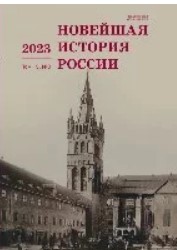Почему не распалась Российская Федерация в 1991 г.?
Why Hadn’t the Russian Federation Collapse in 1991?
Author(s): Boris N. MironovSubject(s): Political history, Government/Political systems, Political behavior, Comparative politics, Pre-WW I & WW I (1900 -1919), Interwar Period (1920 - 1939), Post-War period (1950 - 1989), Transformation Period (1990 - 2010), Inter-Ethnic Relations
Published by: Издательство Исторического факультета СПбГУ
Keywords: ethnic composition; government; korenizatsiia; government bodies; ethno-political inequality; discrimination; peoples; national elites; parade of sovereignties; ASSR;
Summary/Abstract: Parade of the sovereignties of the autonomous republics in 1990–1991 led to the disintegration of Azerbaijan, Armenia, Georgia and Moldova and brought the Russian Federation to the brink of collapse. The main centers of separatism in the Russian Federation were Chechnya and Dagestan, but separatist sentiments and movements were widespread in Ingushetia, Tuva, Tatarstan, Bashkortostan, Yakutia and Buryatia. In the 1990s from 31 to 75 points of ethno-territorial tensions in Russia were recorded. Researchers expresses different points of view on the reasons for the development of nationalism in the autonomous republics. According to one of them, in the republics, under the influence of Moscow’s national policy, ambitious national elites were formed, which became the driving force behind the development of separatism. In this article, this point of view is tested on the data of the all-Union population censuses of 1926, 1939, 1959, 1970, 1979, 1989. The analysis of the national composition of the governing bodies in 1917–1989 allows us to propose the following periodization of the process of indigenization of management in autonomies: 1) 1917–1939 — intensive increase in the ethno-political status of the titular peoples and national minorities in general and negative discrimination against Russians, 2) 1940–1956 — democratic alignment of ethnic statuses, 3) 1956–1989 — moderate increase in the ethno-political status of the titular peoples and non-Russian ethnic groups in general and negative discrimination against Russians. Increasing the representativeness and role of non-Russian ethnic groups and the decline in the representativeness and role of Russians in the administration of autonomies were the main trends in the Soviet period.
Journal: Новейшая история России
- Issue Year: 13/2023
- Issue No: 44
- Page Range: 678-704
- Page Count: 27
- Language: Russian

